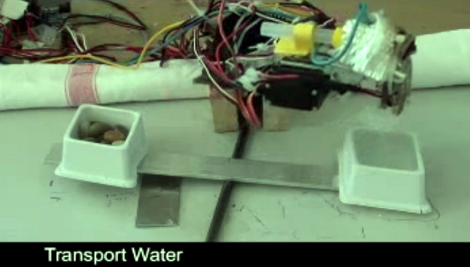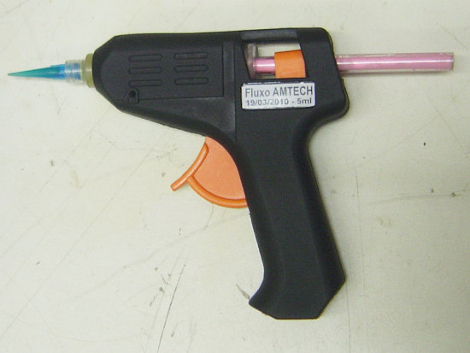
The T-1000 was the shape-shifting robot from T2 (the second Terminator movie). It was so amazing because it could assume the form and texture of anything; humans, piercing weapons, inanimate objects. This robot doesn’t even compare, except for one small trait. When it needs a tool, it can build it as its own appendage. This really is nothing more than making tools with a 3D printer. However, the normal boxy infrastructure is missing.
The print head is mounted on a single robot arm, and the tool is printed using hot melt glue in order to stick to a plate which makes up the business end of robot arm. In this case the robot needed to transport some water. It sets down the plate, uses the hot melt extruder to print a cup on that plate, then picks it up again and uses it to move water from one bowl to the other. You can see it all in the video clip below the fold.
Sure, it’s just baby steps. But hot melt glue sticks are light weight, and don’t require much energy to melt. This makes for a perfect combination as a portable tool shop.
Continue reading “Hot Glue Appendages May Be Predecessor To The Flow Metal Of The T-1000”













